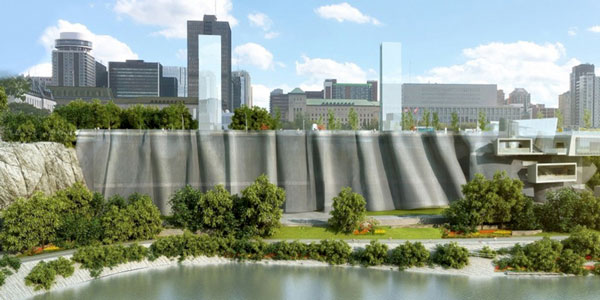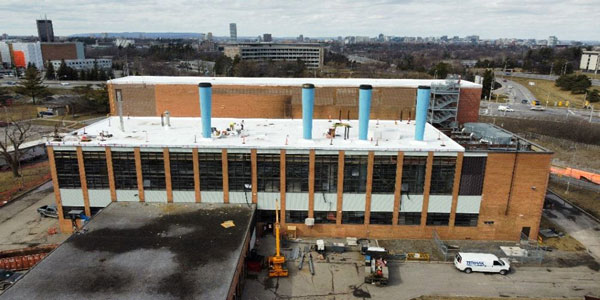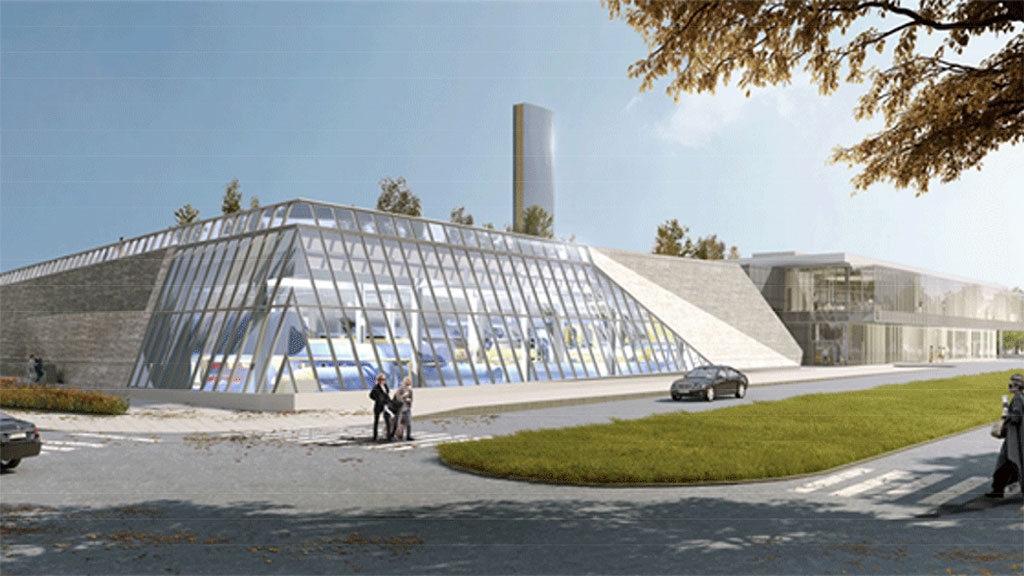Work is progressing on a massive, $1.3-billion transformation of the National Capital Region District Energy System in Ottawa and Gatineau into a more modern, efficient heating and cooling network.
The venture entails building three new clean energy centres and retrofitting another, along with an overhaul of the aging distribution system.
It is expected to be completed by 2026 and is the 23rd largest infrastructure project in Canada with more than 1,800 construction workers.
The present four-loop system will be replaced with a two-loop distribution network. It will be the first large-scale conversion from steam to low-temperature hot water system in North America and result in savings of half a billion dollars by 2055, while reducing GHG emissions by 92 per cent.
“The National Capital Region District Energy System is one of North America’s oldest and largest public systems,” says Tomasz Smetny-Sowa, senior director of the energy services acquisition program at Public Services and Procurement Canada (PSPC). “Built between 50 and 100 years ago, it uses outdated technologies and many of its components are at the end of their service life.
“The modernization of the system will significantly advance the Government of Canada’s efforts to meet its climate change targets.”
The complete system is being improved and upgrades are being made to the mechanical workings of buildings connected to the grid.
The system consists of central plants that are connected to 80 federal buildings for heating and 67 for cooling, including Parliament and the Supreme Court.
The buildings are heated with hot water steam and cooled with chilled water that circulates through more than 14 kilometres of underground piping connected in a loop. The system is being transitioned to a low-temperature hot water system for heating. A new pumphouse along the Ottawa River will provide cold water for cooling, using the river as a green energy source. This is combined with electric chillers for a more sustainable cooling method.
The project is expected to achieve the target of reducing carbon from property operations by 15 per cent by 2050.
“By 2030, the entire system will be in a position to be carbon neutral — making it one of greenest district energy systems of its kind and scale,” says Smetny-Sowa.

One of the greenest district energy systems of its kind
Presently, four projects are in various stages of construction.
A new Cliff Energy Centre is being built next to the Supreme Court. An older plant at the site was demolished in 2020. The new structure is being built below the upper plateau of the Ottawa River escarpment. The design of the centre has been integrated with the escarpment, complete with a sweeping, free-form metal curtain façade that will subtly mask the plant.
An expansive park and gardens will be built atop the plant and there will be theatre boxes for views, along with a large public elevator and a staircase. A visitor education centre at the top floor will focus on climate action and green technologies.
Across the river In Hull, Que., crews are working on building the Modernized Gatineau Energy Centre, a leading-edge, sustainable-energy facility, that began in February 2023.
The facility is primarily underground, freeing up space above for an urban park with gardens and courtyards. It is along the north shore of the Ottawa River and will connect to Hydro Québec’s electrical grid, providing heating and cooling to buildings through underground piping that extends under the MacDonald Cartier bridge to Ottawa and through downtown Gatineau. The structure will use mass timber, have a green roof and ceramic panel cladding.
At Tunney’s Pasture, another energy centre is being built partially underground in a former parking lot area. Installation of piping has begun to connect the facility to other buildings in the Tunney’s campus, as well as to the main district energy distribution loop. Most of the roof of the structure will be preserved as a meadow, with a wide range of native and wild plants and grasses. The building will have sloped glass walls to give visitors a clear view of the inner workings from the outside.
Meanwhile, the existing Confederation Heights Energy Centre near Mooney’s Bay O-Train station in Ottawa is being retrofitted to provide low-temperature hot water heating and electric cooling.
The retrofit started in May 2020 and involves switching from steam to low-temperature hot water, installing efficient boilers and chillers, a new roof, seismic upgrades, and new underground pipes.

‘Innovate Energy’ gets to work
The energy system project is part of a collaborative partnership between the federal government and Innovate Energy.
In 2019, the government signed a 35-year contract with the company to modernize, maintain and operate the system.
Innovate is composed of PCL Construction, Black & McDonald as design-builder, and EQUANS as operation and maintenance provider, with the support of WSP engineers and bbb architects.
Smetny-Sowa says the entire system is scheduled to be transformed and operational in two more years.
Modernization of the system has already cut GHG emissions by 30 per cent from 2005 levels, with a projected 92-per-cent reduction by 2026.
By 2030, the system aims to be carbon neutral.
District energy systems are used around the world. According to the United Nations’ Energy Program, modern district energy systems in cities are “one of the least-cost and most efficient solutions for reducing greenhouse gas emissions and primary energy demand.”









Recent Comments